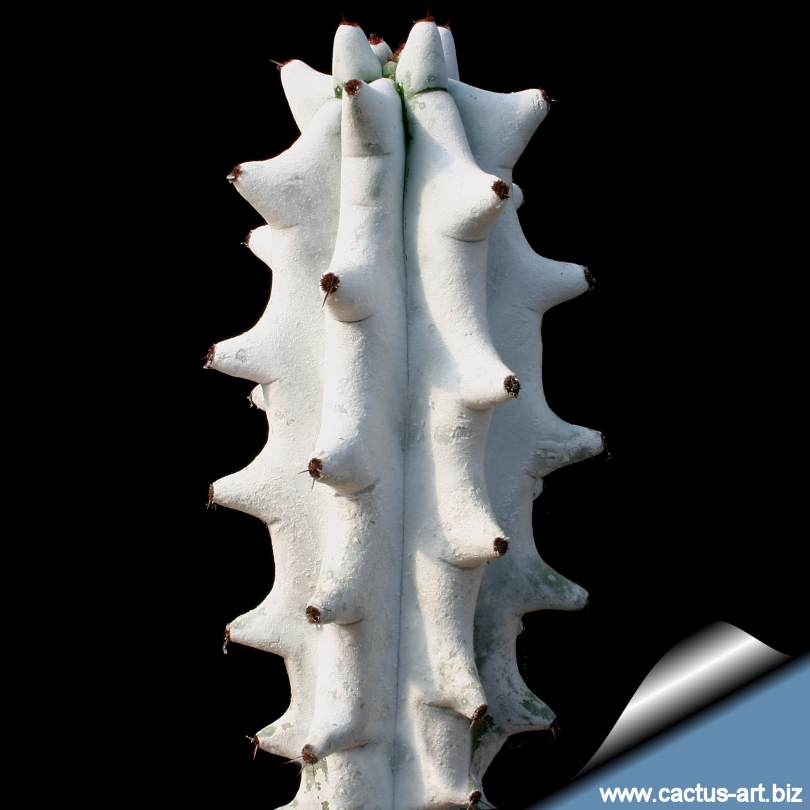Jack Sandrow
Writer, Character, Invasive Species

OUT OF CHARACTER INFORMATION
- Intent: To codify the source of rhydonium as part of its manufacturing process
- Image Credit: Cactus-art.biz
- Canon: No, but this is to codify the source of a canon fuel (rhydonium)
- Permissions: N/A
- Links: Rhydonium (Wookieepedia), Stenocereus (Wikipedia)
- Name: Rhydonis
- Origins: Abafar
- Other Locations: Morak, Saracor, and Tralgaria
- Classification: Cactus
- Average Growth Cycle: From seed to nascent plant in about 8 months, but requires a few years before its sap can be harvested in any meaningful amount. The plant can survive for a few decades, and in hostile conditions can 'hibernate' for up to a century
- Viability: Arid and hot climates, with limited sand and dirt. While it requires water, it can survive for months between rainy seasons, and in times of extreme drought can hibernate for about a century. Too much water or too cool an environment will kill the plant. It is a very specific, delicate, and rare biome that allows the growth of rhydonis plants, thus making their appearance across the galaxy rare.
- Description: Chalky white bulbous protrusions each capped with reddish spikes. The plant itself can rise for up to 10 meters above the desert floor, but rarely higher than a few centimeters. The root system of the plant makes up the bulk of its biomass.
- Average Height:
- Stem - 3 cm to 10 m (the former is far more likely than the latter)
- Root system - 10 cm to 1 m below the surface, with the likelihood of deeper roots increasing depending on how 'dusty' the surface is.
- Average Length:
- Stem - 4 cm to 8 cm across
- Root system - 1 m to 30 m across
- Color: Chalky white skin, red spikes, beige root systems. The sap is clear with a slight oily sheen.
- Nutritional Value: None
- Toxicity: None
- Other Effects: Ingestion of its sap causes very mild anaphylaxis and slight shortness of breath. When carefully boiled down, concentrated, and fermented, the sap takes on a chrome-like hue and becomes the liquid fuel known as 'rhydonium'. This fuel can then be concentrated and stockpiled, but is potentially extremely volatile.
- Distinctions: Its pale hue and small stature helps keep it protected on planets such as Abafar, where the pale and dusty regolith helps shield the plant from any would-be herbivores. Its delicate intake requirements (water, dust, soil, heat, light) and broad root system make it almost impossible to cultivate as a crop.
- Camouflaged in a dusty regolith, this species is extremely hard to locate, and its broad root system makes it very diffused even in its specific biome.
- The source for crafting rhydonium fuel.
- The very dilute sap makes production of rhydonium an extremely front-heavy expense:
- Locating a viable source of rhydonis plants requires finding a suitable biome, assuming the plants aren't already hibernating due to improper growing conditions
- Rhydonis plants are few and far between, even in ideal conditions, thanks to their broad root systems
- Planting new rhydonis plants requires years before harvesting them becomes viable
- Harvesting rhydonis requires a significant amount of PPE and filtration systems to prevent workers from suffering symptoms from exposure to concentrated fumes
- Rhydonium itself is extremely volatile, requiring significant preparation and protection during its production and refinement process
Historically, rhydonium has been found primarily on planet-wide deserts such as Abafar, where water is present but not common, and the soil and/or regolith is dusty but not devoid of nutrients. Planets like Tatooine, where the sand is too granular and the air too dry, are insufficient for rhydonis to survive. On planets like Morak, where the jungles are fertilized by nutrients stemming from deserts, rhydonis is far less prolific, but still commonplace enough to warrant setting up a mining operation.







